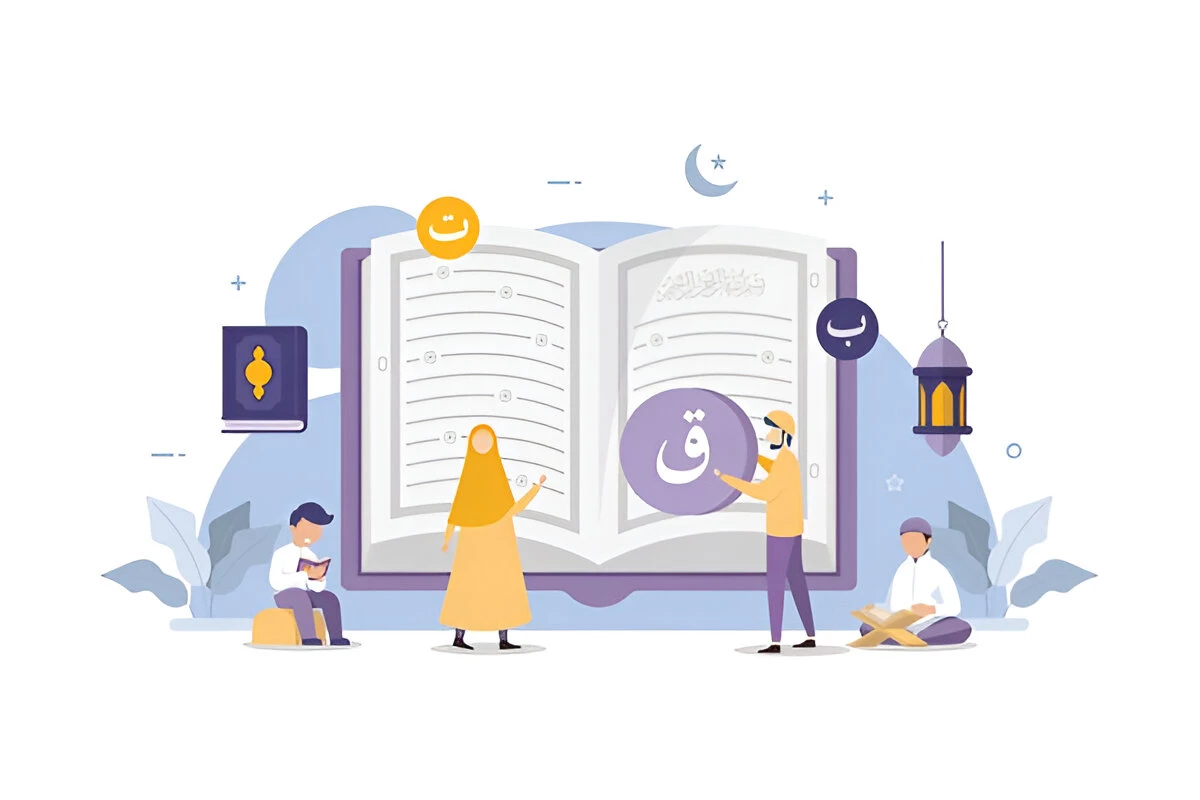The artwork of writing the Quran, known as Quranic calligraphy, is a lovely and respected lifestyle in Islamic tradition. At Write Quran, we provide on-line training that educate you the way to write Quran with talent and reverence. Our courses combine the historic art of Arabic calligraphy with present day teaching methods, allowing college students from all over the global to examine this sacred practice.
The Significance of Learning to Write Quran
literacy to write Quran is further than just perfecting your handwriting. It’s a spiritual trip that brings you near to the holy textbook in a unique and profound way. Then are some reasons why learning to write Quran is significant
- Heightening your reference to the Quran When you write Quran, you interact with the textbook on a deeper role, internalizing its phrases and meanings.
- Conserving Islamic tradition Quranic penmanship is an important part of Islamic heritage. By getting to know this art, you assist save this lovely way of life.
- Perfecting focus and awareness The act of precisely writing each letter requires attention and tolerance, fostering a pensive state.
- Enhancing understanding Writing helps support memorization and understanding of the Quranic verses.
- Creating beautiful art Quranic penmanship is a reputed art form, allowing you to produce stunning pieces that glorify the words of Allah.
Types of Quranic Calligraphy
When you learn to write Quran, you will encounter colorful styles of Arabic penmanship. Then are some of the most prominent styles
Naskh
Naskh is the most commonplace style used for writing the Quran. It’s recognized for its clarity and clarity.
Characteristics of Naskh:
- Round and twisted letters
- Clear and easy to read
- Generally used in published Qurans
Thuluth
Thuluth is an elegant and elaborate script frequently used for ornamental purposes.
Characteristics of Thuluth:
- Elongated, twisted letters
- Complex ligatures
- frequently used for Quranic eulogies on kirks
Kufic
Kufic is one of the oldest calligraphic styles, regarded for its angular and geometric shapes.
Characteristics of Kufic:
- Angular and square shapes
- Bold and monumental appearance
- frequently used in early Quranic calligraphies
Diwani
Diwani is a flowing and ornamental script developed during the Ottoman Empire.
Characteristics of Diwani:
- Flowing, twisted lines
- Letters frequently mound on top of each other
- Delicate to read for newcomers
Our Online Courses Learn to Write Quran

At Write Quran, we offer a range of online courses to help you master the art of writing the Quran. Our courses feed to different skill situations and interests
Preface to Quranic Calligraphy
This course is perfect for newcomers who want to start their trip in writing the Quran.
Course Objectives:
- Learn the basics of Arabic penmanship
- Understand the structure of Arabic letters
- Practice jotting simple Quranic verses
Duration: 6-8 weeks
Learning Naskh Script
This course focuses on the most common script used in writing the Quran.
Course Objectives:
- Perfect your Naskh handwriting
- Learn to write entire Quranic verses in Naskh
- Understand the rules of distance and proportion in Naskh
Duration: 10-12 weeks
Advanced Quranic Calligraphy
For those who want to explore further ornamental styles of writing the Quran.
Course Objectives:
- Learn Thuluth and Diwani scripts
- Produce ornamental Quranic compositions
- Understand the principles of layout and design in Quranic penmanship
Duration: 12-16 weeks
Digital Quranic Calligraphy
This ultramodern course teaches you how to write Quran using digital tools.
Course Objectives:
- Learn to use digital penmanship tools
- Produce digital Quranic art
- Understand the principles of typography in Quranic verses
Duration: 8-10 weeks
Quranic handwriting Illumination
This course combines penmanship with the art of handwriting illumination.
Course Objectives:
- Learn traditional illumination ways
- Produce decorated borders and backgrounds for Quranic verses
- Understand color proposition and composition in Quranic art
Duration: 14-16 weeks
How We Educate You to Write Quran Online?
At Write Quran, we use innovative tutoring styles to help you learn Quranic penmanship from the comfort of your home
- Live videotape classes Interact with expert copyists in real- time.
- Recorded assignments Review ways and practices at your own pace.
- Digital writing tools Learn to use digital pens and tablets for practice.
- Individualized feedback Admit individual guidance on your work.
- Community forums Connect with fellow scholars to partake gests and tips.
- Literal environment Learn about the rich history and artistic significance of Quranic penmanship.
Tools You will Need to Write Quran
To get started with writing Quran, you will need some introductory tools. Then is a list of essential particulars
| Tool | Description |
|---|
| Qalam (Reed Pen) | Traditional tool for Arabic penmanship. |
| Ink | Special ink for penmanship, often made from natural materials. |
| Paper | Smooth paper suitable for penmanship. |
| Inkwell | Holds ink while writing. |
| Ruler and Pencil | Used for creating guidelines. |
| Digital Tablet and Stylus | Used for digital penmanship courses. |
We give guidance on opting and using these tools in our courses.
The Journey of Learning to Write Quran
Literacy to write Quran is a satisfying trip that requires tolerance and practice. Then is what you can anticipate
- Structure foundations Start with introductory strokes and letter forms
- Developing muscle memory Regular practice to ameliorate thickness
- Understanding proportions Learn the rules of letter and word distance
- Learning scripts Progress from simple to more complex calligraphic styles
- Creating compositions Learn to arrange verses beautifully on the runner
- Refining your style Develop your unique approach to Quranic penmanship
Benefits of Learning to Write Quran Online
Choosing to learn how to write Quran online offers several advantages
- Inflexibility Learn at your own pace and on your own schedule
- Global access Study with expert copyists from around the world
- Different community Connect with scholars from colorful artistic backgrounds
- Resource library Access a wide range of digital coffers and references
- Cost-effective Save on trip and physical accoutrements
- Comfortable literacy terrain Practice in the comfort of your own home
Student Success Stories
Numerous of our scholars have set up joy and spiritual growth through literacy to write Quran
- Aisha, 28” Learning to write Quran has strengthened my connection with the holy textbook. It’s like I am internalizing each verse as I write it.”
- Omar, 45” As someone with no cultural background, I noway allowed. I could produce beautiful Quranic penmanship. The online courses made it accessible and pleasurable.”
- Fatima, 35” The digital penmanship course allowed me to combine my love for technology with my passion for the Quran. It’s opened up a whole new world of creative expression for me.”
Relative Study Traditional vs. Online Quran Writing Classes
Let’s compare traditional in- person classes with our online courses
| Aspect | Traditional Classes | Online Classes at Write Quran |
|---|---|---|
| Flexibility | Fixed schedule | Learn at your own pace |
| Geographic limitations | Limited to local teachers | Access to global experts |
| Learning resources | Physical materials | Extensive digital resources |
| Feedback | In-person critique | Personalized digital feedback |
| Community | Local student group | Global online community |
| Cost | Higher (travel, materials) | More affordable |
| Technology integration | Limited | Fully integrated |
As you can see, online classes offer numerous advantages, especially in terms of inflexibility and access to coffers.
Getting Started with Write Quran

Ready to begin your trip in Quranic penmanship? Then is how to get started
- That matches your interest and skill position
- subscribe up for a free introductory session to meet our preceptors
- Prepare your literacy space with necessary accoutrements
- Join our online community to connect with fellow scholars
- Begin your classes and start your beautiful trip of writing the Quran
The Future of Quranic Calligraphy
As we embrace digital technologies, the art of writing Quran is evolving. At Write Quran, we are at the van of these developments
Integrating AI for substantiated literacy paths
Developing virtual reality penmanship gests
Creating cooperative online spaces for Quranic art systems
Conserving and digitizing literal Quranic calligraphies
Conclusion
Literacy to write Quran is a beautiful way to consolidate your connection with the holy textbook and save an important Islamic tradition. At Write Quran, we are passionate about making this art form accessible to everyone through our innovative online courses.
Whether you are a complete freshman or looking to upgrade your chops, our classes offer a unique occasion to engage with the Quran in a deeply particular and cultural way. By learning to write Quran, you are not just perfecting your handwriting – you are embarking on a spiritual trip that will enrich your life and faith.
Take the first step in your calligraphic trip moment. Join us at Write Quran and discover the joy and beauty of writing the words of Allah with your own hands.
Call to Action subscribe up for our free introductory session and begin your Quranic penmanship trip moment!
For more data at the history and types of Islamic calligraphy, go to the Metropolitan Metropolitan Museum of Art’s Islamic Art Department.
To discover a set of lovely Quranic manuscripts, take a look at out the Digital Library of the University of Tokyo.






How to Learn Quran Effectively: A Comprehensive Guide
[…] Why Learning the Quran is Important […]
Al Sajdah Academy: Online Quran Classes & Courses
[…] [Al Sajdah Academy], we understand the importance of quality Islamic education. Our team of experienced and qualified tutors is dedicated to helping students build a strong […]